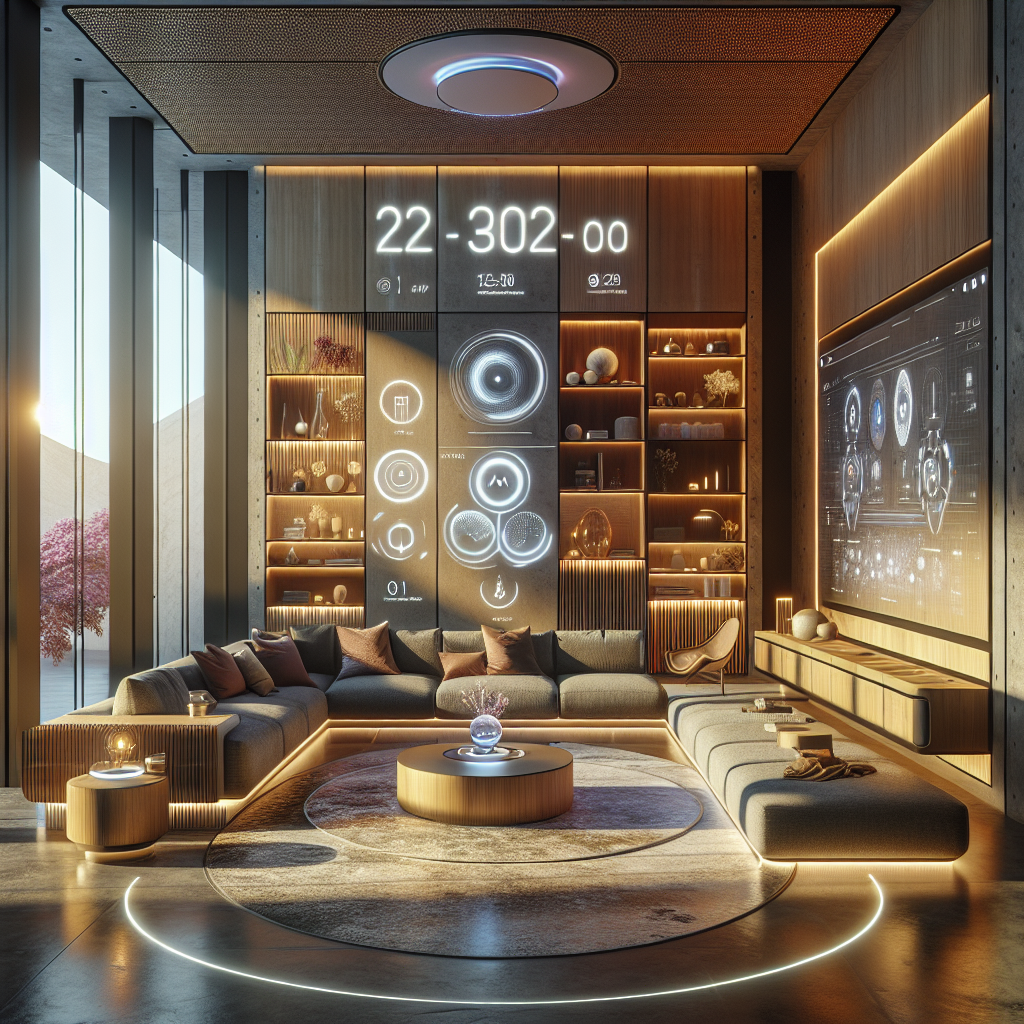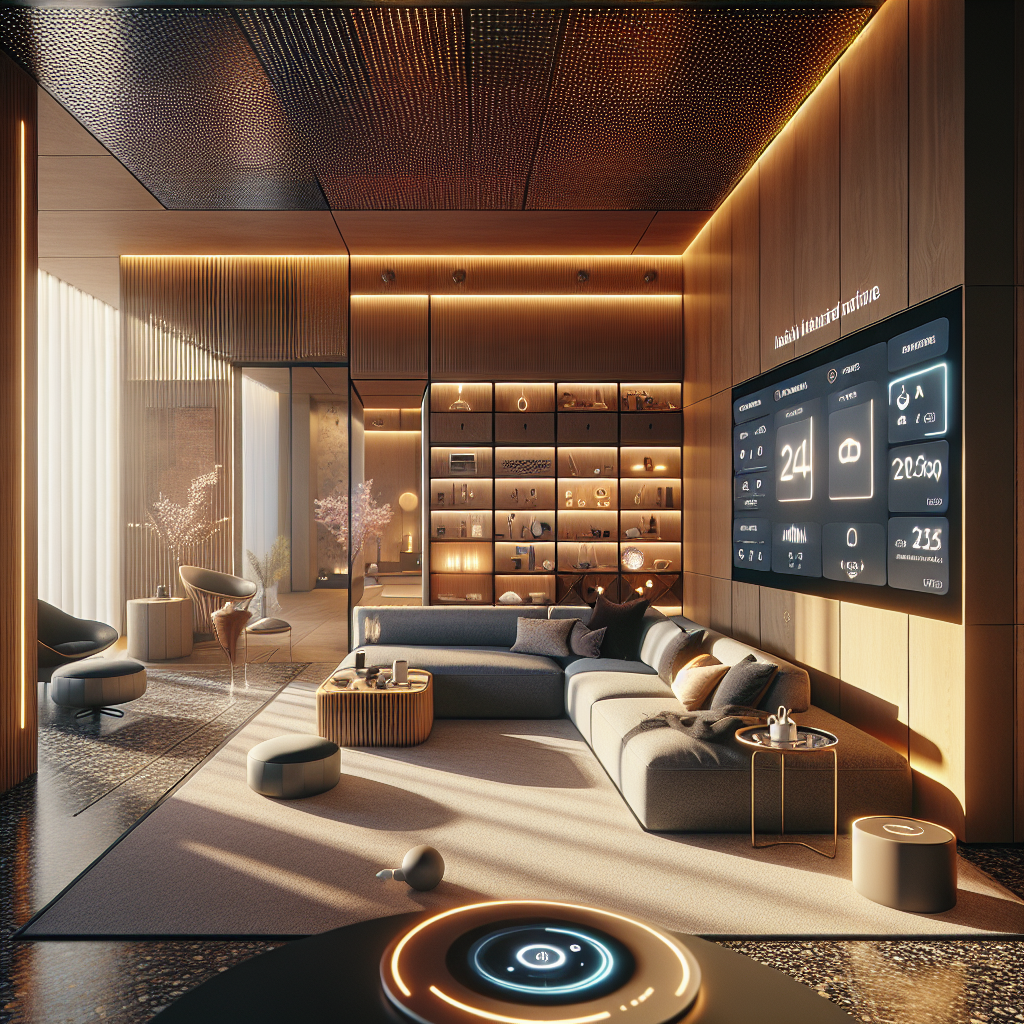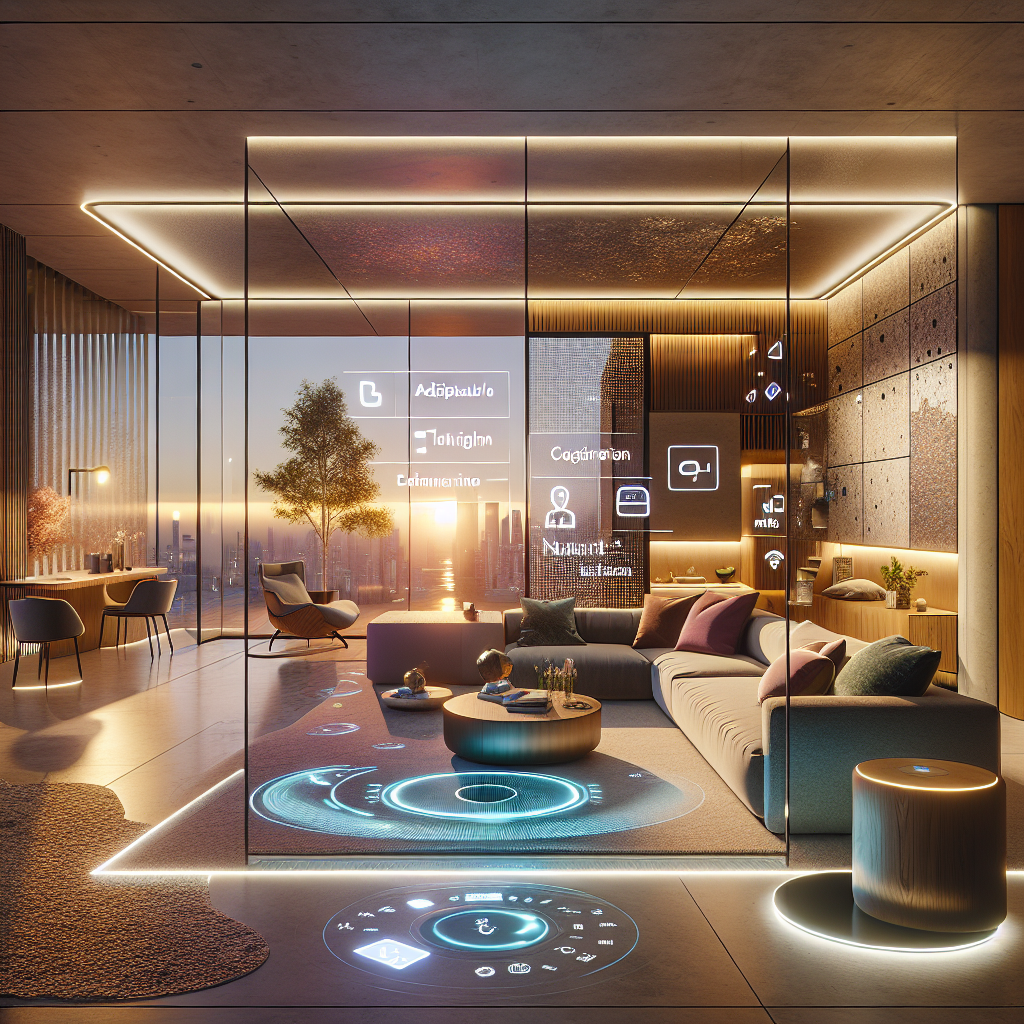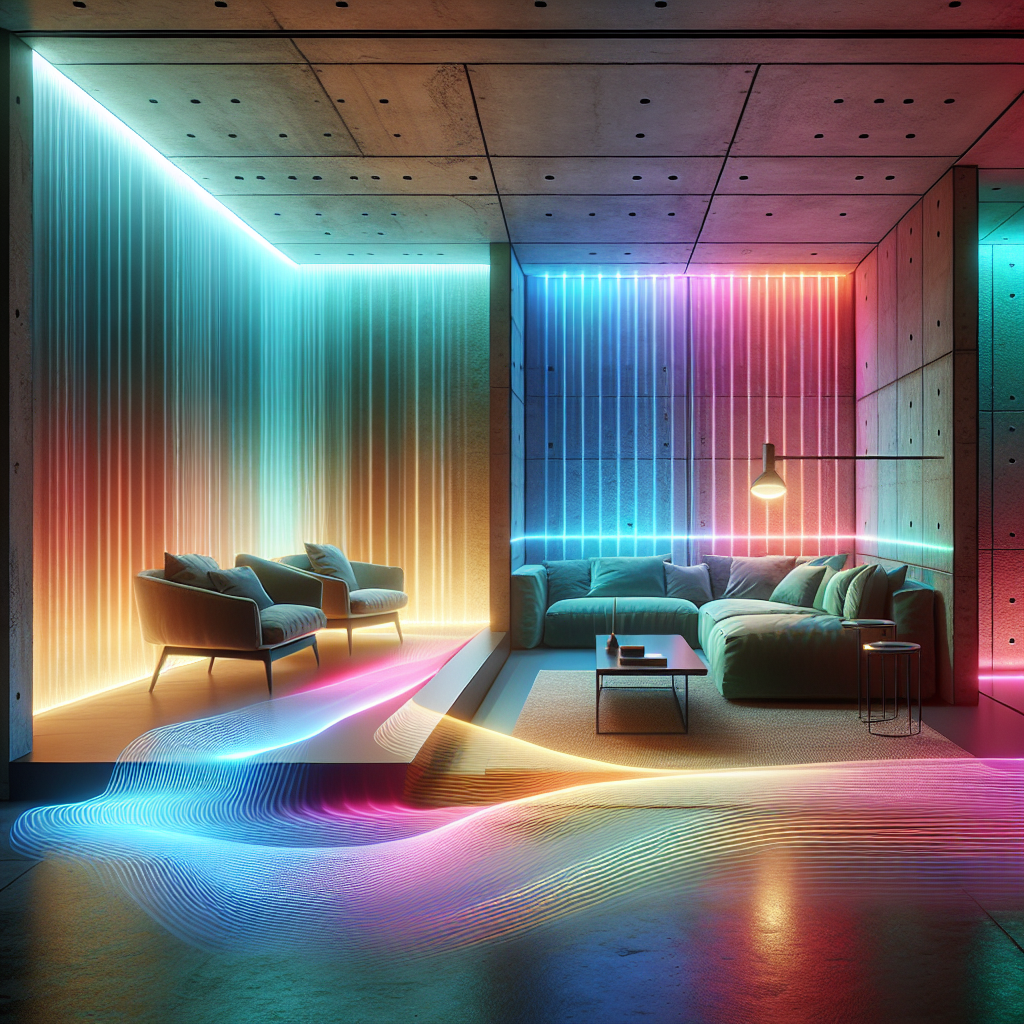Smart Living Rooms: How AI is Redefining Home Comfort
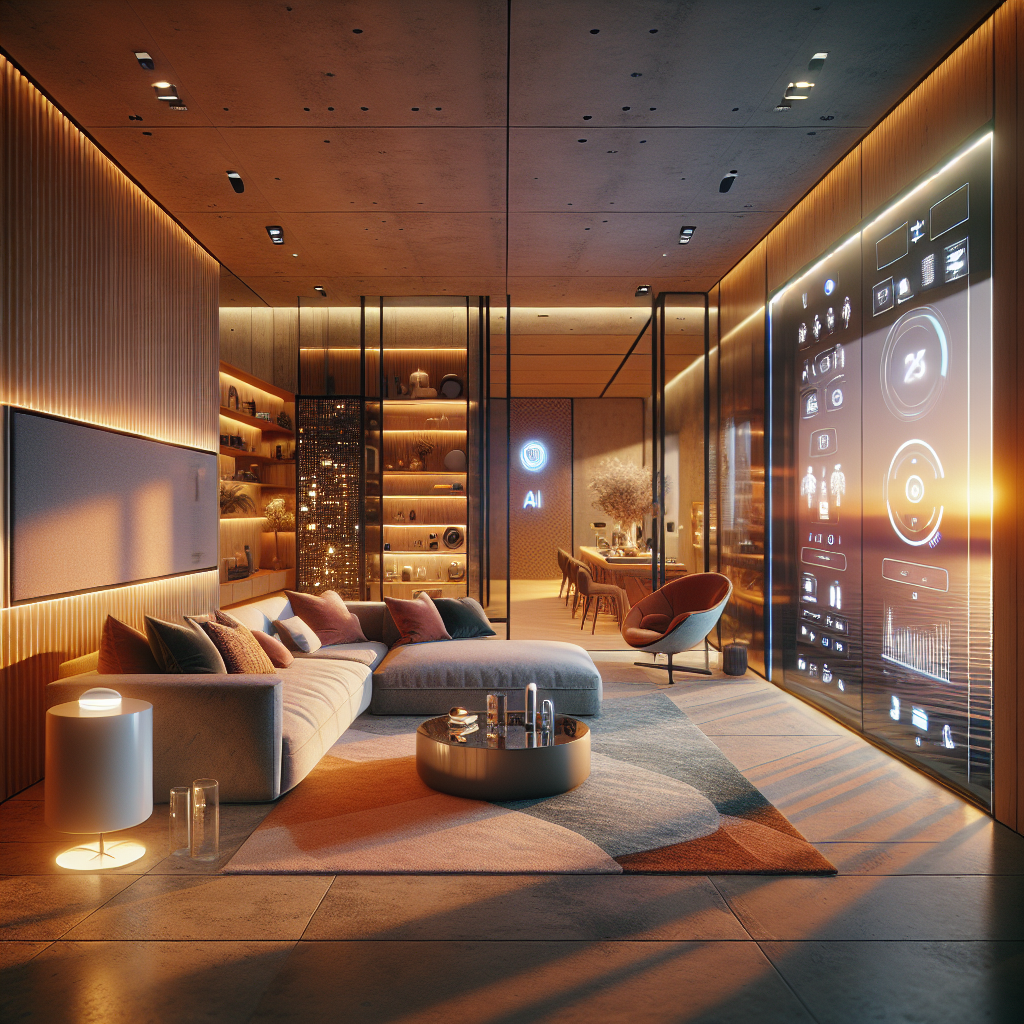
Smart Living Rooms: How AI is Redefining Home Comfort
Once a static gathering space defined by sofas, coffee tables, and a television, the living room has become the stage for a profound transformation. Artificial Intelligence (AI) is not merely infiltrating our homes—it is reimagining them. The smart living room has emerged as the epicenter of domestic innovation, where architecture, interior design, and technology converge to create spaces that are adaptive, intuitive, and deeply human-centric. For architects, designers, and forward-thinking homeowners, this shift signals a new era in which comfort is no longer a passive state but an actively curated experience.
The Living Room as a Responsive Environment
In the past, comfort in the living room was defined by tactile qualities—plush upholstery, warm lighting, or acoustically balanced interiors. Today, AI expands this definition by embedding intelligence into the very fabric of the space. Imagine a living room that adjusts its lighting temperature in real time to match circadian rhythms, lowers blinds automatically as the sun sets, or fine-tunes the acoustics depending on whether you are watching a film, hosting a dinner, or meditating. These are not speculative ideas but realities enabled by machine learning and sensor-driven design.
According to a 2024 report by Statista, the global smart home market is projected to surpass $200 billion in value by 2025, with living room technologies—such as smart speakers, adaptive lighting, and AI-driven entertainment systems—leading adoption. This data underscores the living room’s role as the nucleus of smart home technology, where design and digital intelligence merge seamlessly.
AI as the New Interior Designer
AI is increasingly functioning as a silent collaborator in interior design. Algorithms can now analyze a resident’s habits—when they relax, what media they consume, how they interact with furniture—and propose layouts or configurations that maximize both efficiency and comfort. This is particularly relevant in urban contexts where space-saving furniture and modular solutions dominate. AI can suggest how to reconfigure a room dynamically, shifting from a home office by day to a lounge by night, with lighting, sound, and even scent adapting accordingly.
Some luxury design studios are already experimenting with AI-driven personalization. For instance, platforms are emerging that use generative design principles—similar to those transforming architecture (AI in architecture)—to create living room layouts that respond to individual lifestyles. The result is a new form of bespoke design, where the room itself becomes a living, evolving entity.
Lighting, Acoustics, and the Emotional Landscape
Lighting has always been a cornerstone of interior design, but AI elevates it to a dynamic art form. Systems such as Philips Hue or Lutron’s adaptive lighting can now be paired with AI to learn user preferences and anticipate needs. A living room might glow with soft amber hues during evening reading, then shift to a crisp, daylight-like brightness for morning yoga. The choreography of light becomes a narrative tool, shaping the emotional landscape of the home.
Acoustics, too, are undergoing reinvention. AI-driven sound systems calibrate audio output to the room’s geometry, ensuring that whether you are seated in a corner armchair or sprawled across a sectional sofa, the sound experience remains balanced. Beyond entertainment, AI acoustics can create restorative soundscapes—waves, rain, or curated playlists—that respond to biometric data, fostering relaxation and well-being. This resonates with the growing emphasis on biophilic design, where sensory engagement is central to human comfort.
Furniture That Thinks
The integration of AI into furniture design is still nascent but highly promising. Imagine a sofa that subtly adjusts lumbar support based on posture, or a coffee table that charges devices wirelessly while monitoring air quality. Some prototypes already exist: Italian design houses have experimented with AI-embedded modular seating that shifts shape depending on occupancy, while Scandinavian brands are exploring tables with embedded voice assistants and gesture recognition.
This evolution aligns with the broader movement toward responsive design, where furniture and architecture adapt to human needs rather than the other way around. The living room becomes less a static arrangement of objects and more a dynamic ecosystem of responsive surfaces and intelligent materials.
Privacy, Ethics, and the Invisible Hand of AI
While the promise of AI-driven living rooms is seductive, it also raises critical questions. Who owns the data generated by these spaces? How do we ensure that personalization does not slip into surveillance? These are not abstract concerns: as Internet of Things devices proliferate, so too do vulnerabilities. Designers and architects must therefore collaborate with technologists to embed privacy by design, ensuring that the living room remains a sanctuary rather than a site of intrusion.
Some firms are already addressing this challenge by developing on-device AI systems that process data locally rather than in the cloud, minimizing exposure. Others are experimenting with transparent design languages—visual cues that indicate when sensors are active, for instance—so that users remain in control of their environments.
Case Studies: From Concept to Reality
In Tokyo, a luxury apartment complex recently unveiled living rooms where AI integrates with sliding partitions, allowing spaces to morph between intimate and expansive configurations. In Copenhagen, a design collective has prototyped a living room where AI-driven lighting interacts with natural daylight, creating a seamless dialogue between interior and exterior. Meanwhile, in Los Angeles, high-end residences are incorporating AI-powered projection systems that transform walls into immersive art installations, echoing the city’s cinematic heritage.
These examples illustrate how AI is not simply an add-on but a catalyst for rethinking spatial typologies. The living room is no longer a passive backdrop but an active participant in daily life.
The Future of Comfort
As AI matures, the smart living room will evolve from a novelty into a necessity. For design professionals, this represents both an opportunity and a responsibility: to harness technology not as a gimmick but as a tool for enhancing human experience. The challenge lies in balancing the invisible intelligence of AI with the tactile, material richness that defines great interiors. A velvet sofa, a terrazzo floor, a hand-blown glass pendant—these elements must coexist with algorithms and sensors in a symphony of design and technology.
Ultimately, the redefinition of comfort is not about automation for its own sake but about creating living rooms that are more attuned to human rhythms, emotions, and aspirations. The living room of tomorrow will not just be smart—it will be empathetic, intuitive, and profoundly personal.
For architects and designers, the message is clear: the future of the living room is already here, and it is being shaped not only by materials and forms but by the invisible intelligence of AI. The question is not whether to embrace it, but how to do so with elegance, responsibility, and vision.
